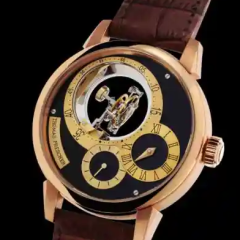Boley WW lathe - what else do I need?
-
Recently Browsing
- No registered users viewing this page.
-
Topics
-
Posts
-
By luiazazrambo · Posted
I put the original broken glass (whats left of it) behind the acrylic. This is how it originally looked like. A cheap clock but I like it. Very noisy when the alarm comes wake up guaranteed! 🙂 -
If at all possible, find a service guide for the automatic movements your work on, because the lubrication procedures may have different requirements or rely on oils you would not use in a manual wind train (in addition to the braking grease you mentioned). Some autos like older Seikos do not have a manual wind option, so the procedure of letting down the mainspring without being able to use the crown may require a screwdriver in the ratchet wheel screw and great care. Do you have an auto movement you were planning to start with?
-
By LittleWatchShop · Posted
I am an amateur, so there's that. I do not get fixated on amplitude, lift angles, and beat error. However, 4.8ms would bug me if it were my watch. But you must judge your own skills to appreciate the possibility of going backward. I suggest, that you button it up let your friend enjoy the watch for now. As your skills progress, come back to it and correct it. I assume that this watch has a fixed hairspring pin. Some modern watches have an adjustable pin along with adjustable regulator. These are trivial to get in beat. I own a valjoux 726 my dad gave me on my 18th birthday (a looooong time ago). I broke the ratchet wheel with an aggressive wind 4 yrs ago. I have been waiting for my skills to progress before doing a service. I am close. Your advice is well placed and I will apply it. -
I didn’t find any anomaly to the left of the red mark…reflection? this is the balance in its pivot in the inverted assembly. i can’t see any obvious kinks and the spring is flat as far as I can see. Either the stud screw is missing, or it’s glued in… I don’t know. I’m loathe to fiddle with it. Any further insights? Thanks!
-
Update! I've dismantled it, cleaned all the glue off, and rebuilt and lubricated the base movement. I'll leave the chrono part for another day. It's running well - great amplitude and keeping time, but it's got a beat error of 4.8ms. How important is it to correct this? I'm worried that the potential for making things worse having to take the hairspring off and on repeatedly to adjust this. Would anyone here accept it at that?
-





Recommended Posts
Join the conversation
You can post now and register later. If you have an account, sign in now to post with your account.
Note: Your post will require moderator approval before it will be visible.